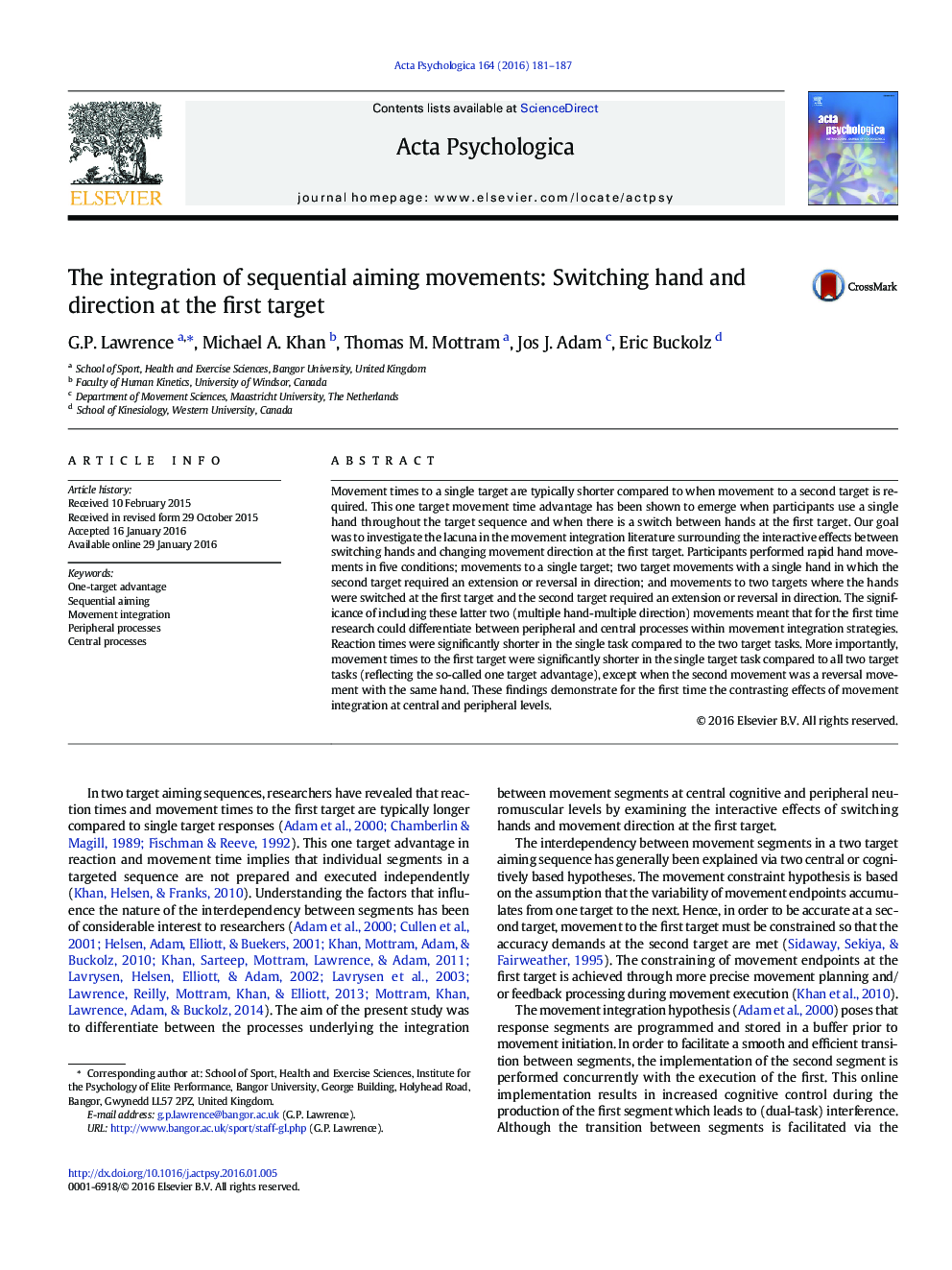| Article ID | Journal | Published Year | Pages | File Type |
|---|---|---|---|---|
| 919672 | Acta Psychologica | 2016 | 7 Pages |
•We investigate integration strategies in two target sequential aiming movements.•The interactive effects of changing direction and hand at target 1 were tested.•In extension movements integration strategies are similar in single and two limb actions.•Movement integration altered when direction and hand changes occurred simultaneously.•We report contrasting effects of movement integration at central and peripheral levels.
Movement times to a single target are typically shorter compared to when movement to a second target is required. This one target movement time advantage has been shown to emerge when participants use a single hand throughout the target sequence and when there is a switch between hands at the first target. Our goal was to investigate the lacuna in the movement integration literature surrounding the interactive effects between switching hands and changing movement direction at the first target. Participants performed rapid hand movements in five conditions; movements to a single target; two target movements with a single hand in which the second target required an extension or reversal in direction; and movements to two targets where the hands were switched at the first target and the second target required an extension or reversal in direction. The significance of including these latter two (multiple hand-multiple direction) movements meant that for the first time research could differentiate between peripheral and central processes within movement integration strategies. Reaction times were significantly shorter in the single task compared to the two target tasks. More importantly, movement times to the first target were significantly shorter in the single target task compared to all two target tasks (reflecting the so-called one target advantage), except when the second movement was a reversal movement with the same hand. These findings demonstrate for the first time the contrasting effects of movement integration at central and peripheral levels.
